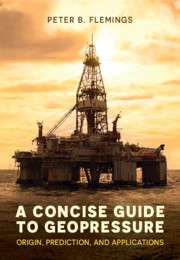Book contents
- A Concise Guide to Geopressure
- A Concise Guide to Geopressure
- Copyright page
- Contents
- Acknowledgments
- Nomenclature
- 1 Introduction
- 2 Reservoir Pore Pressure
- 3 Mudrock Material Behavior
- 4 The Origins of Geopressure
- 5 Pore Pressure Prediction in Mudrocks
- 6 Pore Pressure Prediction: Unloading, Diagenesis, and Non-Uniaxial Strain
- 7 Pressure and Stress from Seismic Velocity
- 8 Overburden Stress, Least Principal Stress, and Fracture Initiation Pressure
- 9 Trap Integrity
- 10 Flow Focusing and Centroid Prediction
- 11 Flow Focusing, Fluid Expulsion, and the Protected Trap
- References
- Index
- References
References
Published online by Cambridge University Press: 04 March 2021
- A Concise Guide to Geopressure
- A Concise Guide to Geopressure
- Copyright page
- Contents
- Acknowledgments
- Nomenclature
- 1 Introduction
- 2 Reservoir Pore Pressure
- 3 Mudrock Material Behavior
- 4 The Origins of Geopressure
- 5 Pore Pressure Prediction in Mudrocks
- 6 Pore Pressure Prediction: Unloading, Diagenesis, and Non-Uniaxial Strain
- 7 Pressure and Stress from Seismic Velocity
- 8 Overburden Stress, Least Principal Stress, and Fracture Initiation Pressure
- 9 Trap Integrity
- 10 Flow Focusing and Centroid Prediction
- 11 Flow Focusing, Fluid Expulsion, and the Protected Trap
- References
- Index
- References
- Type
- Chapter
- Information
- A Concise Guide to GeopressureOrigin, Prediction, and Applications, pp. 249 - 263Publisher: Cambridge University PressPrint publication year: 2021



